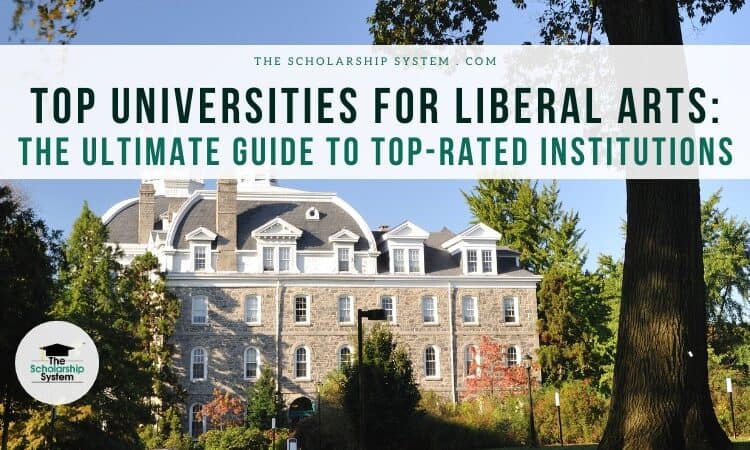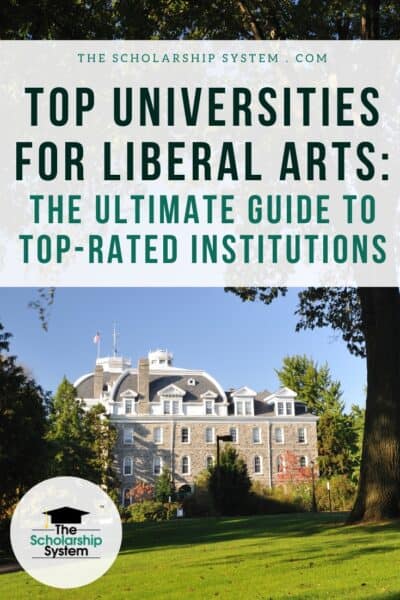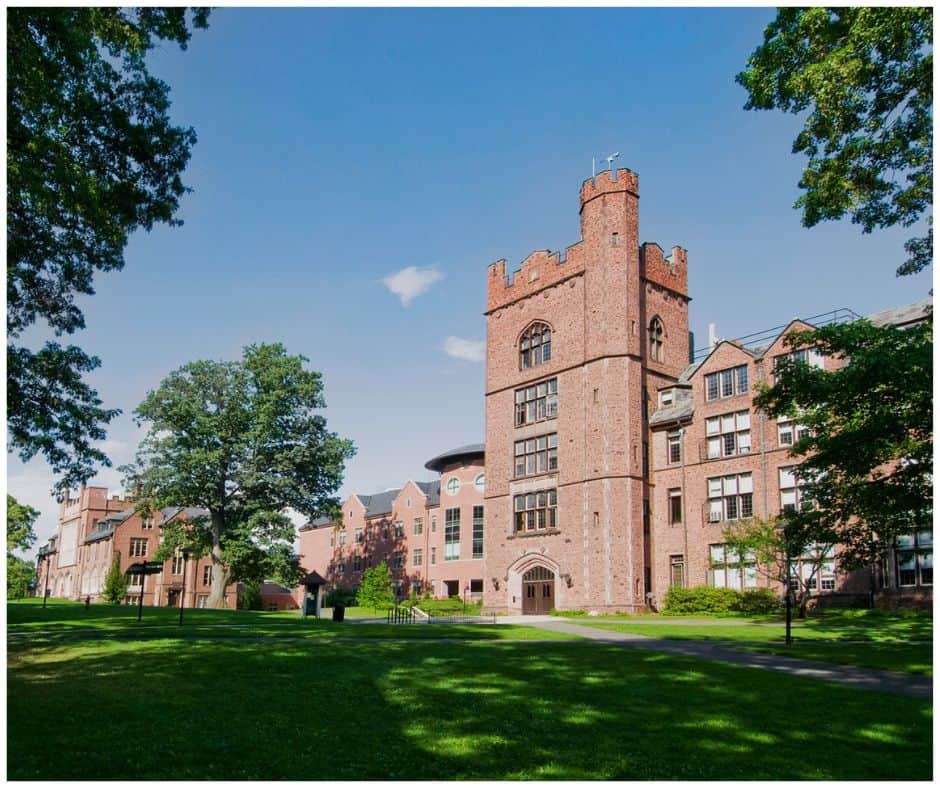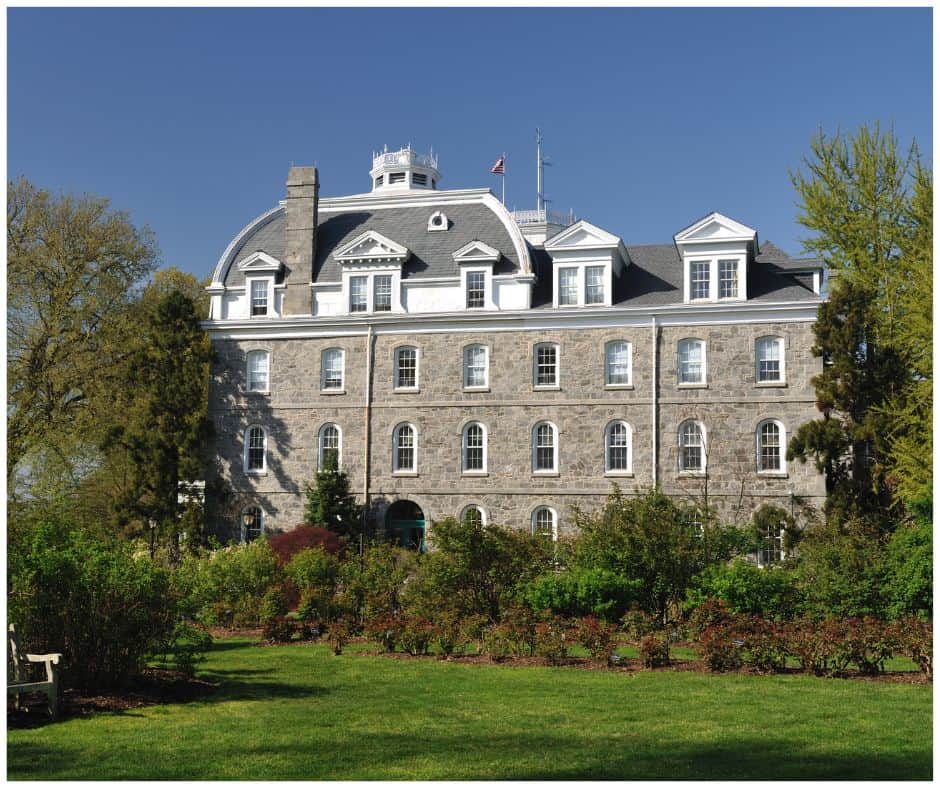Updated on August 16th, 2024
Choosing the right university for your student is a pivotal decision that can shape their future. Liberal arts education’s broad focus on critical thinking, communication, and problem-solving skills offers a strong foundation for various career paths. Guiding your student towards institutions known for their academic excellence can set them on a trajectory of lifelong success and fulfillment.
Understanding the college admissions process is crucial in providing resources and guidance to help prospective students navigate their choices effectively.
Exploring the best liberal arts colleges can be both exciting and overwhelming. With numerous top liberal arts schools available, finding the right fit for your student’s interests and goals is essential. Whether your student is passionate about the humanities, sciences, or social sciences, the right liberal arts college can provide a nurturing environment that fosters intellectual growth and personal development. Here’s what you need to know.
Scholarships are an ideal way to cover the cost of a liberal arts education, as they don’t result in debt. If you and your student want to learn about college scholarships for liberal arts colleges and universities, sign up for our free college scholarship webinar! Take a quick trip over to http://thescholarshipsystem.com/freewebinar to reserve a spot today.
What Are Liberal Arts Colleges?
Definition and History of Liberal Arts Education
National liberal arts colleges are institutions that prioritize undergraduate education while maintaining a strong focus on the liberal arts. They emphasize the personalized learning environment, community engagement, and a commitment to critical thinking and research, distinguishing these colleges through their rankings and the comprehensive resources they provide for prospective students.
The history of liberal arts education dates back to ancient Greece, where it was considered essential for cultivating a well-rounded individual. Today, these colleges continue to uphold this tradition by offering a broad education that spans the humanities, sciences, and social sciences, ensuring that students graduate with a comprehensive and adaptable skill set.
Importance of Liberal Arts Education in Today’s World
A liberal arts education provides students with versatile skills that benefit them both personally and professionally. By focusing on critical thinking, analytical reasoning, and problem-solving, liberal arts programs prepare undergraduates for a wide range of career paths.
In today’s rapidly changing world, these skills are more valuable than ever, enabling graduates to adapt to various industries and roles. Attending a liberal arts school fosters intellectual curiosity and lifelong learning, equipping students with the tools to navigate complex challenges and contribute meaningfully to society. This holistic approach to education remains crucial in developing well-rounded, innovative individuals.
Benefits of Attending a Liberal Arts College
Advantages of Liberal Arts Colleges
Small class sizes and a low student-to-faculty ratio create opportunities for personalized attention and mentorship at a liberal arts school. Various institutions encourage student participation through numerous on-campus organizations and small classroom settings that promote interaction and collaboration among students. This fosters a close-knit community where students feel supported and engaged.
The holistic undergraduate experience emphasizes academics, student life, and community involvement. Students and faculty at liberal arts colleges often report a higher quality of life and a greater sense of belonging. The intimate class settings and robust community environment contribute to a vibrant, interactive learning experience, enhancing both academic and personal growth.
Disadvantages of Liberal Arts Colleges
Liberal arts colleges often lack the name recognition of prestigious research universities, especially on an international scale. This can make it harder for graduates to secure employment opportunities overseas. Additionally, many liberal arts colleges are located in rural or semi-rural areas, which can lead to feelings of isolation or a perceived lack of community.
While the close-knit campus atmosphere offers many benefits, it may not appeal to those seeking the vibrant social scene and diverse opportunities found at larger university campuses. These factors can sometimes limit the appeal and perceived value of a liberal arts education.
How to Choose the Best Liberal Arts College
Selection Criteria for Top Liberal Arts Colleges
Choosing the best liberal arts college for your student involves carefully considering various factors to ensure the right fit. Evaluating specific aspects of what the schools offer is essential, as this will help you identify institutions that align with your student’s goals and preferences.
Here is a list of the selection criteria worth considering:
- Academic reputation and rigor
- Faculty qualifications and expertise
- Student-to-faculty ratio and class sizes
- Resources and facilities
- Alumni success and outcomes
Academic Reputation and Rigor
Whether attending a public or private institution, the emphasis on academic excellence remains a core component of the student experience. Liberal arts colleges in the U.S. are known for fostering intellectual curiosity and critical thinking, which are essential for success in today’s dynamic job market.
Top liberal arts colleges offer a rigorous curriculum across a broad range of disciplines. Students have access to unique academic opportunities along with internships and other hands-on experiences in addition to more conventional coursework. This comprehensive approach ensures graduates are well-prepared for various career paths or further educational pursuits.
Faculty Qualifications and Expertise
Liberal arts colleges attract highly qualified and dedicated faculty members who are experts in their fields. These professors are not only passionate about their subjects but are also committed to teaching and mentoring students. The close interaction between faculty and student bodies enhances the quality of education, allowing for more personalized and engaging classes.
Faculty at leading institutions often have impressive academic backgrounds and professional experience, providing students with valuable insights and guidance. This dedication to student development sets top liberal arts colleges apart, creating a supportive and enriching learning environment.
Top Liberal Arts Colleges in the U.S.
Best Liberal Arts Colleges in America
Williams College
Williams College, located in Williamstown, Massachusetts, is renowned for its academic excellence and supportive community. It offers a diverse curriculum with a strong emphasis on undergraduate teaching and personalized learning experiences.
Amherst College
Amherst College in Amherst, Massachusetts, is part of the Five College Consortium, which also features the University of Massachusetts Amherst, Hampshire College, Smith College, and Mount Holyoke College. It’s known for its rigorous academics, small class sizes, and open curriculum, allowing students the freedom to explore various disciplines.
Pomona College
Pomona College, situated in Claremont, California, provides a liberal arts education with access to the resources of the Claremont Colleges consortium. It emphasizes interdisciplinary learning, critical thinking, and community engagement.
Bowdoin College
Bowdoin College, located in Brunswick, Maine, offers a challenging liberal arts education with a commitment to sustainability and the common good. It features small class sizes and a supportive campus community that encourages intellectual exploration.
Swarthmore College
Swarthmore College in Swarthmore, Pennsylvania, is distinguished by its rigorous academics and strong emphasis on social responsibility. The college is part of the Tri-College Consortium, a valuable resource for students, allowing them to access courses and facilities at nearby Bryn Mawr and Haverford Colleges. The college provides a collaborative learning environment with interdisciplinary study and civic engagement opportunities.
Notable Alumni and Success Stories
Liberal arts colleges have produced a remarkable array of successful and influential individuals across various fields. These institutions are known for fostering critical thinking, creativity, and a strong sense of social responsibility, which their graduates carry into their professional lives.
Here is a list of some notable liberal arts college attendees:
- Former President Barack Obama – Occidental College
- Actress Meryl Streep – Vassar College
- Former Secretary of State Madeleine Albright – Wellesley College
- Actor Harrison Ford – Ripon College
- Actor Steven Carell – Denison University
- Journalist Laura Session Stepp – Earlham College
Liberal Arts Education in the 21st Century
Emphasis on Interdisciplinary Studies and Practical Skills
Many liberal arts colleges are adapting to the 21st century by teaching students to be flexible and adapt to situations and challenges. They increasingly incorporate interdisciplinary studies and practical skills into their curricula, ensuring students are well-prepared for diverse career paths.
Some colleges are also expanding online and long-distance learning to better equip students for the modern workforce. By embracing these changes, liberal arts colleges maintain their high ranking and relevance, producing graduates who can navigate complex global issues with agility and insight. This forward-thinking approach helps students thrive both academically and professionally.
How Liberal Arts Colleges Are Evolving to Meet Modern Needs
Liberal arts colleges are evolving to meet the needs of the 21st century by incorporating practical skills and interdisciplinary studies into their curricula. This evolution includes offering classes that blend traditional liberal arts education with modern technological and professional skills.
These colleges produce well-educated and intellectually curious alumni prepared to succeed in a rapidly changing world. With dedicated professors and innovative teaching methods, liberal arts colleges across the nation are ensuring their students are ready for the challenges and opportunities that await them post-graduation. This adaptability keeps liberal arts education relevant and impactful.
Career Opportunities and Outcomes
The Value of a Liberal Arts Degree in the Job Market
A liberal arts degree provides students with versatile skills that are valuable in a wide range of industries and careers. Employers highly value the diverse skill set and adaptability that a liberal arts education imparts, which includes critical thinking, effective communication, and problem-solving abilities.
Graduates are well-suited for roles in business, government, non-profit organizations, and many other fields where these competencies are essential. The ability to approach complex issues from multiple perspectives makes liberal arts graduates particularly attractive to employers looking for innovative and flexible problem solvers, ensuring strong career prospects and professional success.
Liberal Arts Schools vs. Universities
Key Differences Between Liberal Arts Colleges and Universities
Liberal arts colleges focus primarily on undergraduate education, emphasizing a broad-based curriculum that fosters critical thinking and well-rounded intellectual development. In contrast, universities offer a wider range of programs, including extensive graduate degrees and professional studies.
Liberal arts colleges prioritize teaching over research, ensuring students receive personalized attention and mentorship from faculty. This commitment to undergraduate education results in smaller class sizes and a close-knit academic community where students can engage deeply with their studies. While offering more diverse academic and extracurricular opportunities, universities often have larger class sizes and a stronger emphasis on research and graduate education.
Which is Right for You?
Consider your student’s academic goals and priorities when deciding between a liberal arts college and a university. If your student values a personalized learning experience with close interactions with professors and peers, a liberal arts college may be the right choice for you. These institutions emphasize a well-rounded undergraduate education, offering a supportive environment where teaching is prioritized.
On the other hand, if a student seeks a broader range of academic programs, including graduate degrees and opportunities for extensive research, a university might better suit your aspirations. Your student should reflect on their preferences for class size, campus community, and academic focus to make an informed decision.
Conclusion
Final Thoughts on Choosing the Right Liberal Arts College
Research and consider the selection criteria for top liberal arts colleges when choosing the right institution for your student. Consider your student’s academic goals, priorities, the college’s reputation, faculty qualifications, and available resources and facilities.
A thorough evaluation of these factors will help ensure your student finds a college that aligns with their aspirations and provides a supportive and enriching educational environment. Remember, the right fit can significantly impact your student’s academic success and personal development, setting them on a path to a fulfilling and accomplished future.
Frequently Asked Questions
What is the highest-ranked liberal arts college?
Williams College consistently holds the top spot among liberal arts colleges in various national rankings. Known for its academic excellence, small class sizes, and strong faculty-student relationships, Williams provides an exceptional undergraduate experience. Its rigorous curriculum and vibrant campus community make it a leader in liberal arts education.
Are Ivy Leagues liberal arts?
Ivy League schools are not exclusively liberal arts colleges, but they do incorporate a strong liberal arts education within their broader university offerings. These institutions provide a comprehensive education that includes liberal arts alongside extensive graduate and professional programs. Ivy League universities are renowned for their rigorous academics and prestigious reputations.
Why are liberal arts colleges so expensive?
Liberal arts colleges are often expensive due to their commitment to providing high-quality education with small class sizes and personalized attention from faculty. These institutions invest heavily in student resources, faculty salaries, and campus facilities to maintain an enriching and supportive learning environment. Additionally, many liberal arts colleges have limited student bodies, which can drive up the cost per student.
Which liberal arts colleges give the most financial aid?
Amherst College, Williams College, Bowdoin College, Pomona College, and Swarthmore College are among the liberal arts colleges known for offering substantial financial aid packages. These institutions are committed to meeting 100 percent of the demonstrated financial need for all admitted students. By providing generous aid, they ensure a high-quality liberal arts education is accessible to students from diverse economic backgrounds.
Scholarships are an ideal way to cover the cost of a liberal arts education, as they don’t result in debt. If you and your student want to learn about college scholarships for liberal arts colleges and universities, sign up for our free college scholarship webinar! Take a quick trip over to http://thescholarshipsystem.com/freewebinar to reserve a spot today.








Leave a Reply